Southwestern Ireland
It is impossible not to think of Ireland for a road trip. The land of St. Patrick, Guinness, endless green landscapes, numerous ruins and castles and picturesque peninsulas invites you to go out. On this route, we largely follow the rugged coastline of the Wild Atlantic Way. We alternate the beautiful and fascinating nature with visits to the lively and colourful cities of Cork, Galway, Sligo and Dublin, among others. On this route, you can expect traditional Irish music, cosy pubs, peace and quiet, nature and unsurpassed Irish hospitality. We start in Rosslare and follow the west coast to Sligo and end in Dublin.
Total distance of the route: 1226 km
Rosslare
Arriving in Rosslare, we drive south to Lady's Island Lake. Lady's Island is a pre-Christian settlement. In the 6th century, St. Abban founded a monastery there. Since the 7th century, Our Lady's Island has been a famous place of pilgrimage. You can see the remains of St. Vaughn's Church and a leaning tower. The tower dates from Norman times.
From here we start our trip and follow the river Suir to Cahir. Cahir is a picturesque town overlooking the banks of the Suir. About six kilometres north of Cahir is Knockgraffon Motte, an artificial earthen mound and part of an Anglo-Norman settlement. The Motte is a national monument, but has never been the subject of archaeological research.
On the way to Cork, we stop to walk through the peaceful Glengarra Woods. At the Galtee Mountains, you can expect sensational panoramic views. Via small roads through beautiful countryside, we drive to Cork.
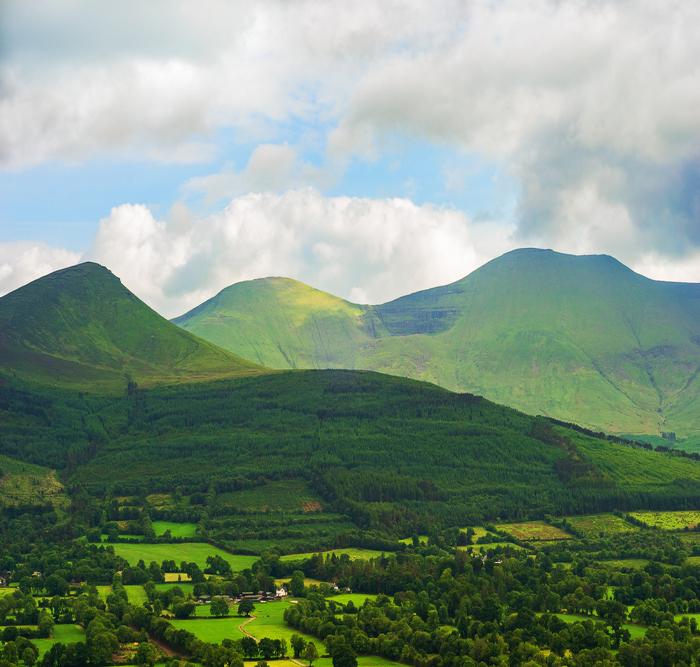
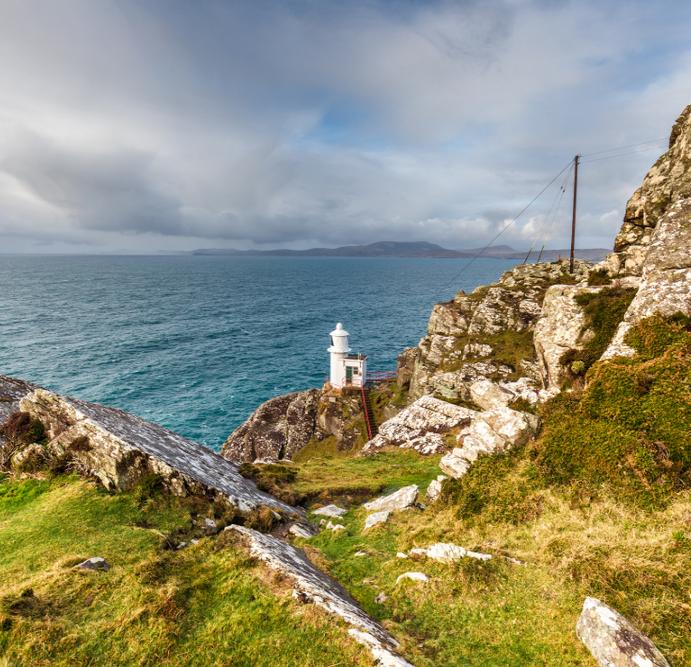
Cork & Wild Atlantic Way
County Cork is the largest county in Ireland and is part of both the Wild Atlantic Way and Ireland's Ancient East. Cork is the second largest city in the Republic of Ireland after Dublin and is connected to the sea by the harbour and the narrow canal, Passage West. It is a lively and bustling city with everything from historic buildings to cosy Irish pubs.From Cork, we largely follow the Wild Atlantic Way along Ireland's west coast. The Wild Atlantic Way stretches from Donegal in the north to Cork in the south. The route first winds southwest from Kinsale to Clonakilty, across Skibbereen past Roaring Water Bay and the islands. From dreamy Bantry Bay and the Sheep's Head peninsula to Kenmare. Depending on the time you have, you can also drive past Bere Island and Dursey Island. One thing is for sure, there are stories and history everywhere. You can walk through coastal forts and stone circles, visit a story festival or just enjoy the view of the wild Atlantic Ocean from an old lighthouse.
Killarney National Park
To the south and west of the town of Killarney in County Kerry lies a vast rugged mountain landscape. These include the MacGillycuddy's Reeks, Ireland's highest mountain range rising to over 1,000 metres. At the foot of these mountains nestle the world-famous Lakes of Killarney. There, where the mountains extend to the lakeshore and their lower slopes are covered in forests, lies the 10,236-hectare Killarney National Park. The distinctive combination of mountains, lakes, forests and waterfalls under ever-changing skies gives the area a special scenic beauty. Coming from Kenmare, you drive the full length of the national park. At Muckross Lake, you will find Muckross House & Gardens. These are easily accessible by motorhome, car or motorbike. There are six official walking trails throughout the national park. These walks take you along beautiful fauna and flora. Although the lakes invite you to go canoeing or kayaking, you must first ask permission at the Ranger Base. Wander through the cosy streets or visit the impressive cathedral.
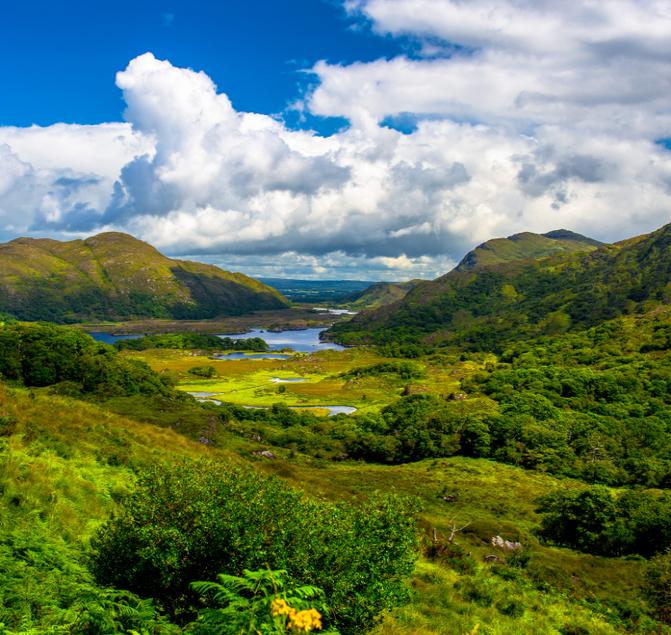

Tralee
From Killarney we follow the coast further north. You can choose to make a diversion before Tralee to the peninsula and town of Dingle. The Slea Head Route to Dingle is passable by motor home, car or motorbike, but requires a bit of driving. The road before and after Slea Head is very narrow. However, the view is breathtaking. From Tralee, we drive further to Tarbert where we take the ferry across the estuary of the Shannon. The river flows deep inland to Limerick city. Instead of taking the ferry, you can also drive to Limerick and visit the nice city. In Limerick you can visit many art galleries and museums or dine in a variety of award-winning restaurants.
Our next stop, Spanish Point, is about 3 km west of Milltown Malbay. It is a small seaside resort with a beautiful sandy beach. The place is named after the Spaniards who were buried here after the sinking of their Armada ships in 1588. One of the ships ran aground on the reefs of Mutton Island. In the fishing village of Quilty, you can hire a pirogue and visit the site of the wreck.
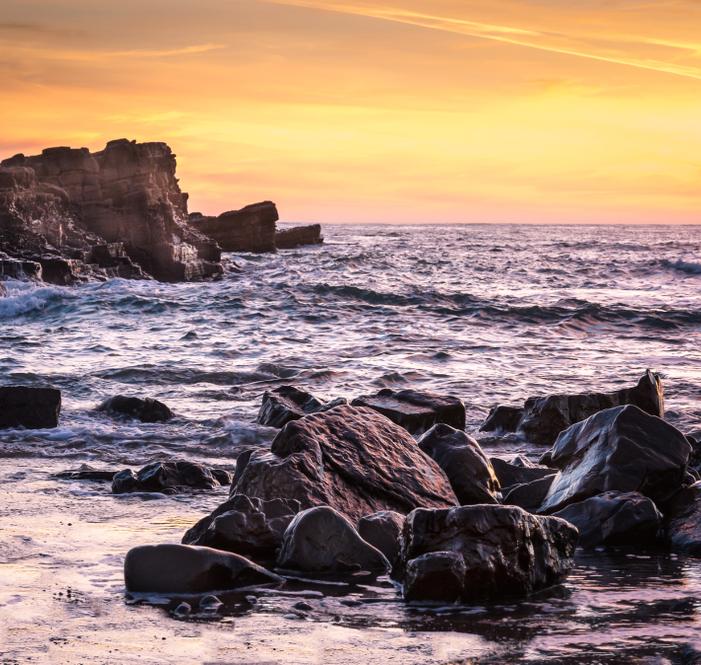
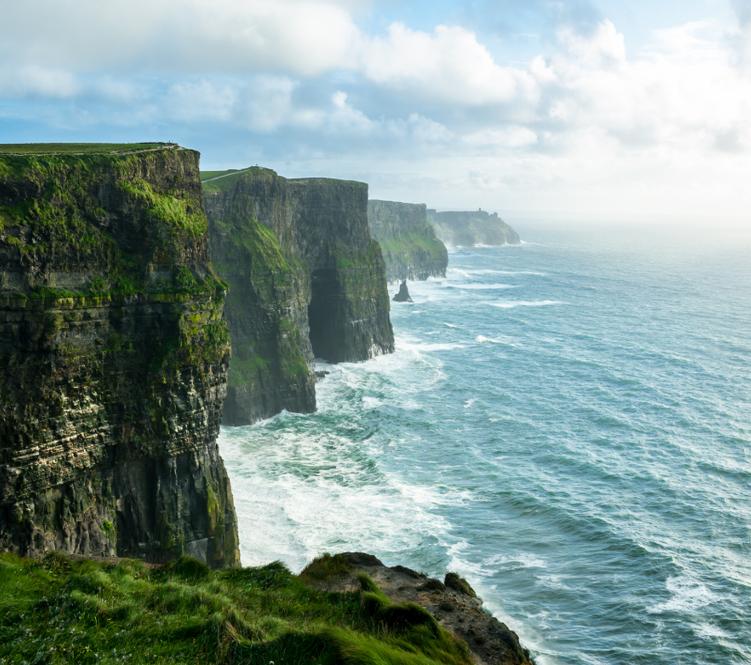
Doolin & the Cliffs of Moher
A not-to-be-missed stop on the Wild Atlantic Way is the Cliffs of Moher. One of the most popular visitor spots in Ireland. The cliffs tower over the rugged west coast of Clare. They offer great walking and spectacular views over the Atlantic Ocean and the Aran Islands. Not far from the cliffs is the Burren, an arid landscape where a lot of rare flora and fauna grows. That is why the Burren is also called 'fertile rock'. Both the Burren and the Cliffs of Moher are part of the UNESCO Global Geopark. Sustainable tourism is supported here. The area has been a special bird and wildlife sanctuary since 1979, and a little further afield is the welcoming coastal town of Doolin, where you can further explore the unique Aran Islands. Doolin is the birthplace of traditional Irish music. There's a great pub with music and craic every night. In Doolin Cave, you can admire stalactites.
Galway
The city of Galway is known as one of the nicest cities in Ireland. With its mix of unconventional hipness and traditional culture, Galway is the ideal change from the rugged nature we drove through earlier. In the summer, there are many festivals to attend. Galway has a reputation as a party city for good reason. Besides entertainment, Galway also offers the tranquillity of the Atlantic Ocean. The small suburb of Sallhill is right by the sea. You can stroll along the 2 km long promenade. Tradition has it that at the end of the promenade you should kick the wall, as this is said to bring good luck. If the weather permits, you can find a nice spot on the beach.
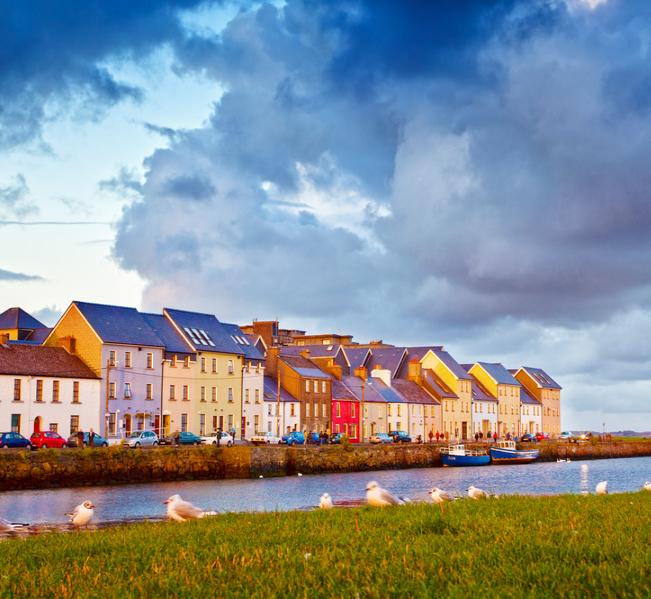

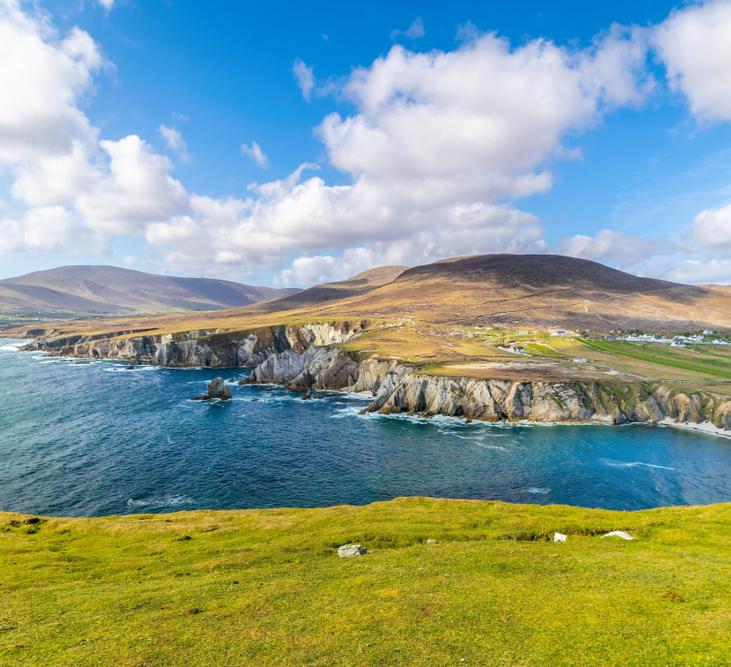
Achill Island
Located in the heart of the Wild Atlantic Way, Achill Island is typical of the raw wilderness of the Atlantic coastline. Its steep cliffs, windswept beaches, rich heritage and desolate moors make Achill Island the perfect antidote to city life. Achill has a long history of human presence. There is evidence that Achill was inhabited some 5,000 years ago. Witness to this are the megalithic tombs and promontory forts at Slievemore, along the Atlantic Drive and on Achil Beg Island.With its Atlantic location, five Blue Flag beaches and breathtaking mountain scenery, Achill is the perfect place for outdoor activities and water sports of all kinds. Achill's romantic setting has also proved a creative haven for artists and writers, including Paul Henry, Heinrich Boll and Graham Greene.In the town of Dooagh, you can admire a new beach since 2017. For the first time since 1984, Dooagh Bay once again boasts an expansive sandy beach. The ocean has deposited thousands of tonnes of sand on the previously rocky 'beach'. Dolphins, sharks and whales are regularly spotted in the bay.
Sligo
Sligo is the English name for the Irish town of Sligeach, meaning 'abundant in shells'. The coastal town is also part of the Wild Atlantic Way and many people stop here to discover its history and culture. Sligo's strategic location was important in prehistoric times. For example, the town's first roundabout was built around a megalithic tomb at Abbeyquarter North. Sligo Bay is an ancient natural harbour that was already known to Greek, Phoenician and Roman traders, and there's plenty to do in terms of cultural activities in Sligo. The town was an inspiration to both poet and Nobel Prize winner W.B. Yeats and his brother, artist and illustrator Jack Butler Yeats. A collection of J.B. Yeats' art is held in the Niland Gallery. Throughout the year, there are many festivals held in the city. In July every year, you can enjoy the Sligo Jazz Project. We decide not to follow the Wild Atlantic Way further north, but to drive straight to Dublin, our last stop.
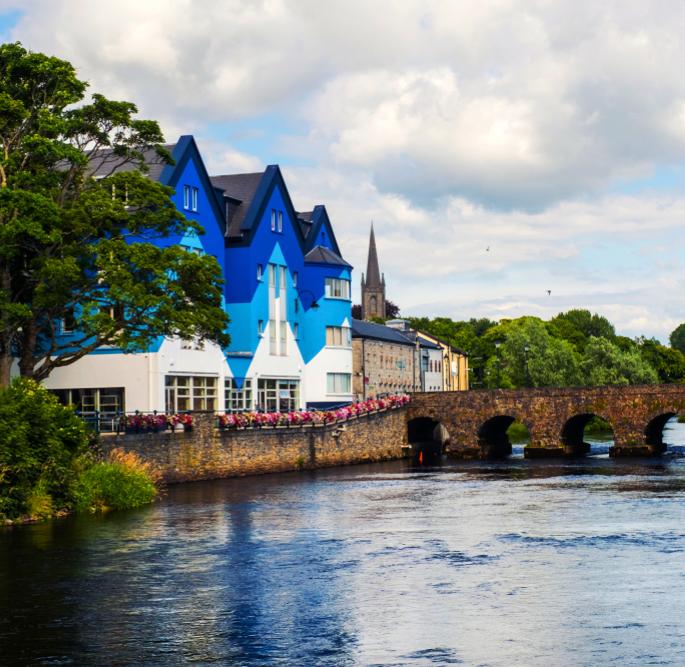
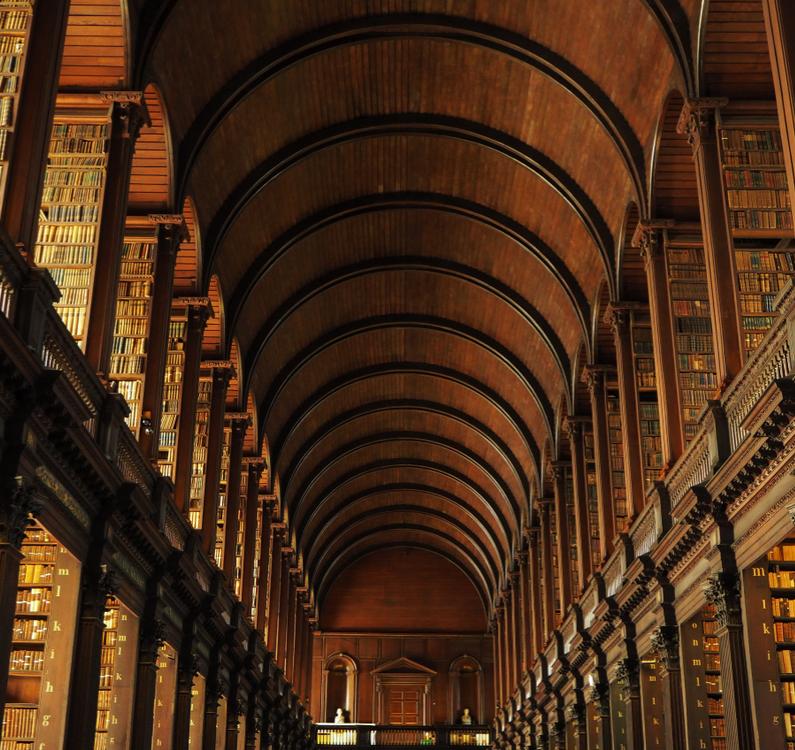
Dublin
Dublin is the capital of Ireland and you can spend a lot of time there. With over 700 pubs, the Guinness brewery, many historical sites such as St. Patrick's Cathedral, Dublin Castle and Christ Church Cathedral, Dublin has a lot to offer. St. Patrick's Cathedral is dedicated to Ireland's patron saint: St. Patrick. The church was built on the site of the spring from which St. Patrick baptised the Irish. Also worth visiting is the university Trinity College. The university was founded by Queen Elizabeth I of England and is one of the most prestigious educational institutions in Ireland. Animal lovers should visit the famous Dublin Zoo. The Ha'penny Bridge is the symbol of the city. This pedestrian bridge with romantic lanterns owes its name to the toll that was levied for a century: half a penny.An hour's drive from Dublin lies Wicklow Mountains National Park. Here you can find historical remains such as ruined churches, but above all you can enjoy the beautiful scenery before the return journey. In Dublin you can take a ferry again.
Would you like to visit the entire island? We can recommend to combine this road trip with the Northern Ireland road trip.

